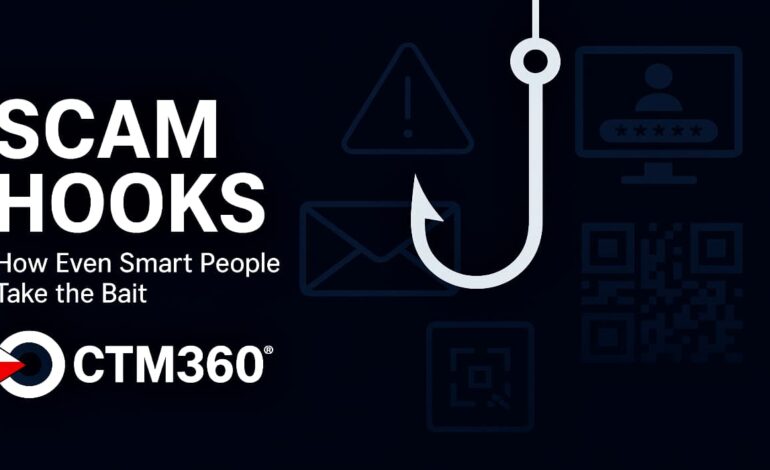CTM360 Report Unveils Emotional Triggers Behind Modern Fraud

Research from CTM360 has identified the emotional tactics that modern fraudsters employ to ensnare victims. This comprehensive report reveals that scammers utilize manipulative strategies rooted in artificial intelligence, stolen data, and brand impersonation. These tactics extend far beyond traditional phishing schemes, capitalizing on trust and urgency to deceive individuals and organizations globally.
The report outlines how various “scam hooks” serve as the initial trigger for fraud. These hooks can take many forms, including alerts, invoices, login pages, QR codes, and direct messages. Unlike the earlier days of crude phishing emails, today’s scams are sophisticated and meticulously designed. They seamlessly blend into everyday digital interactions, making them increasingly difficult to identify.
Understanding the Mechanics of Deception
Emotional manipulation lies at the core of these scams. Scammers are not relying on technical skills alone; they exploit psychological triggers such as fear, urgency, greed, trust, curiosity, and authority. Each of these emotions narrows a victim’s judgment, making them more susceptible to manipulation. The landscape of fraud has shifted from a focus on breaking into systems to engaging individuals psychologically.
For instance, a message may threaten that “Your account will be locked in one hour,” creating a sense of urgency. Alternatively, a fabricated request from an executive may manipulate trust, while a romance scam could exploit empathy. All these scenarios are engineered to compress time and provoke emotional responses, prompting victims to make hasty, unsafe decisions.
Four Key Tactics Employed by Scammers
CTM360 categorizes the methods used by scammers into four primary groups:
1. **Psychological Traps**: These exploit emotions through themes of urgency, greed, and fear, often leveraging significant events to create a sense of immediacy.
2. **Technical and Design Traps**: Scammers use fake login pages, look-alike domains, malicious applications, and QR codes to deceive victims into providing sensitive information.
3. **Social Engineering Traps**: This tactic involves impersonating trusted figures such as IT staff or family members, utilizing cloned profiles and fake communications to build trust.
4. **Content and Media Traps**: Scammers lure victims with fabricated stories, job offers, giveaways, or deepfake content that appears legitimate.
The introduction of AI into these tactics marks a significant escalation in the sophistication of fraud. Scammers are now able to use chatbots to generate convincing phishing emails, employ voice cloning to impersonate familiar contacts, and create deepfake videos to disseminate false narratives. Alarmingly, nearly one-third of individuals have encountered AI-driven voice scams, often without realizing the technology at play.
As these fraudulent tactics advance, the volume of scams is expected to increase, further blurring the lines between authenticity and deception.
Recognizing the Traps Before Falling Victim
Although fraud tactics are continuously evolving, CTM360’s report emphasizes that subtle clues often remain. By analyzing real-world examples, the report equips readers with practical tools to identify red flags. It highlights how seemingly benign emails, advertisements, or messages may conceal sophisticated fraud schemes.
The key takeaway from the report, titled “SCAM HOOKS: How Even Smart People Take the Bait,” is that scams are particularly effective when circumstances catch victims off guard. Both individuals and businesses need to stay vigilant. Recognizing scam hooks, pausing before taking action, and treating digital trust as a valuable asset are essential steps in safeguarding against fraud.
As noted by CTM360, increasing awareness is critical to reducing risks associated with these scams. The focus has shifted from technical defenses to the human element, making every user’s judgment a frontline defense against fraud.
For further insights and strategies to combat these tactics, the full report is available for review on CTM360’s website.






